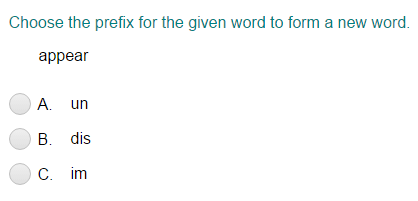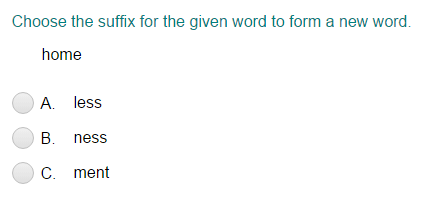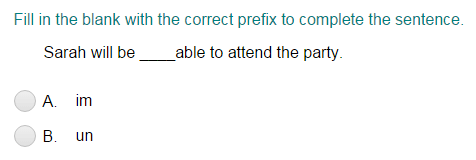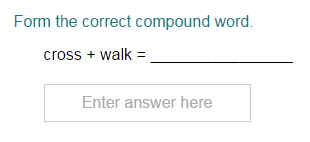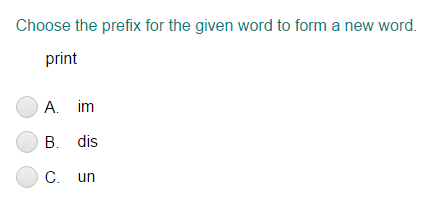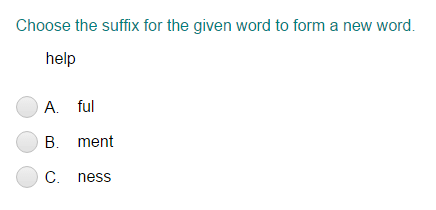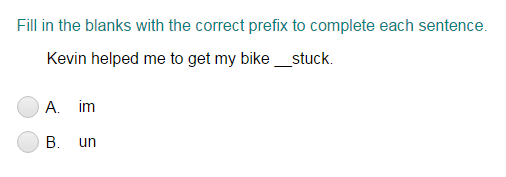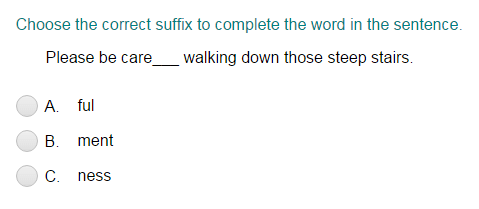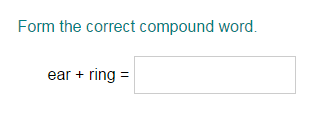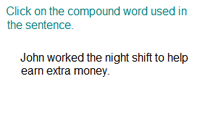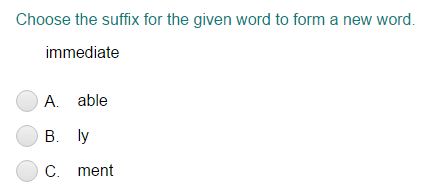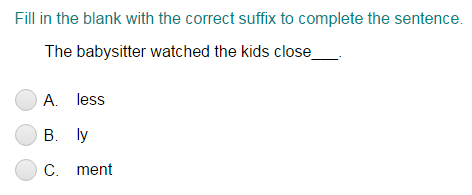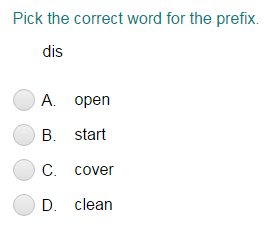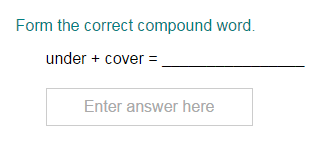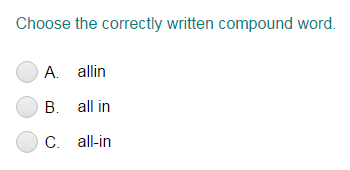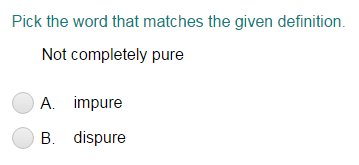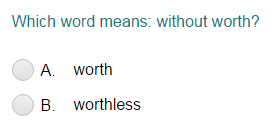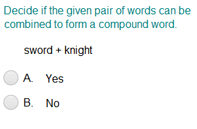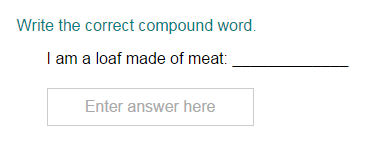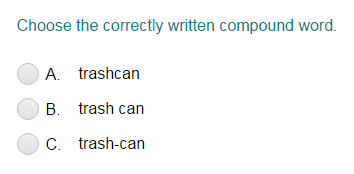Login as parent/teacher to assign this.
Compound Words Practice
Progress
Identifying Compound Words
Identifying Compound Word in a Sentence Part 1
Identifying the Prefix for a given Word to Form a New Word Part 1
Identifying the Suffix for a given Word to Form a New Word Part 1
Completing a Sentence Using the Correct Prefix Part 1
Pick the Word That Is Using a Prefix in the Sentence Part 1
Pick the Word That Is Using a Suffix in the Sentence Part 1
Forming Compound Words Part 1
Compound Words
Identifying the Prefix for a given Word to Form a New Word Part 2
Identifying the Suffix for a given Word to Form a New Word Part 2
Completing a Sentence Using the Correct Prefix Part 2
Completing a Sentence Using the Correct Suffix Part 1
Pick the Word That Is Using a Prefix in the Sentence Part 2
Pick the Word That Is Using a Suffix in the Sentence Part 2
Separating Compound Words Part 1
Forming Compound Words Part 2
Forming Compound Words with the Help of Clues Part 1
Identifying Compound Word in a Sentence Part 3
Identifying the Suffix for a given Word to Form a New Word Part 3
Completing a Sentence Using the Correct Prefix Part 3
Completing a Sentence Using the Correct Suffix Part 2
Pick the Word That Is Using a Prefix in the Sentence Part 3
Pick the Word That Is Using a Suffix in the Sentence Part 3
Identifying the Correct Word for a given Prefix
Recognizing Compound Words Part 1
Forming Compound Words Part 3
Form Compound Word
Separating Compound Words Part 2
Choosing Correct Compound Word Part 1
Choosing the Word with the Correct Prefix to Match the Definition
Choosing the Word with the Correct Suffix to Match the Definition
Recognizing Compound Words Part 2
Forming Compound Words with the Help of Clues Part 3
Separate Compound Words Part 2
Choosing Correct Compound Word Part 2
Compound Words Practice
A compound word is made up of two or more smaller, individual words. Each word can stand independently from the other with its own meaning and spelling. When the two are put together, however, a new word is formed with a new meaning relating to the original words. Butter and fly each have their own separate meaning. However, when they're put together in the compound word butterfly, an entirely new meaning is created. Green and house can be used to describe a colorful house. When they're put together to create greenhouse, the entire meaning is changed to now signify a building made with clear walls in order to trap heat and grow plants.
Compound words are classified under one of three types: open compounds, closed compounds, and hyphenated compounds. It can be challenging for students to discern when to use each type of compound word, as there is no hard and fast rule. Through repeated exposure in various texts, students will be able to decide how each compound word is classified and spelled. Having students practice using compound words in their writing is another tactic in increasing their exposure and ultimate knowledge of compound words.
Compound words can be different parts of speech based on how they are used. For example, housesit is a verb but textbook is a noun. Some compound words can fall under more than one part of speech, depending on their use in a sentence.
Some words look like compound words but they are not. The words pan + cake creates the word pancake: a type of cake made in a pan. However, office is not a compound word made of the words off + ice. These words do not create a new meaning related to their original meaning. Other words that look like compound words but are not include forage, season, and mandate. If a word includes a complete word along with a separate word part or affix, it's also not a compound word.
Why should students learn compound words?
Do compound words always have to be made of two complete words?
How are compound words and contractions different?
Can the words within a compound word be different parts of speech?
up + stairs = preposition + noun
butter + fly = noun + verb
barn + yard = noun + noun
play + room = verb + noun
red + head = adjective + noun


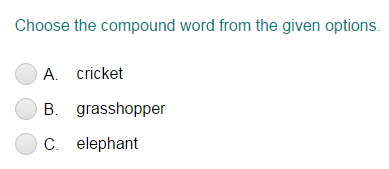

 Please Wait
Please Wait

